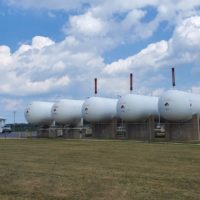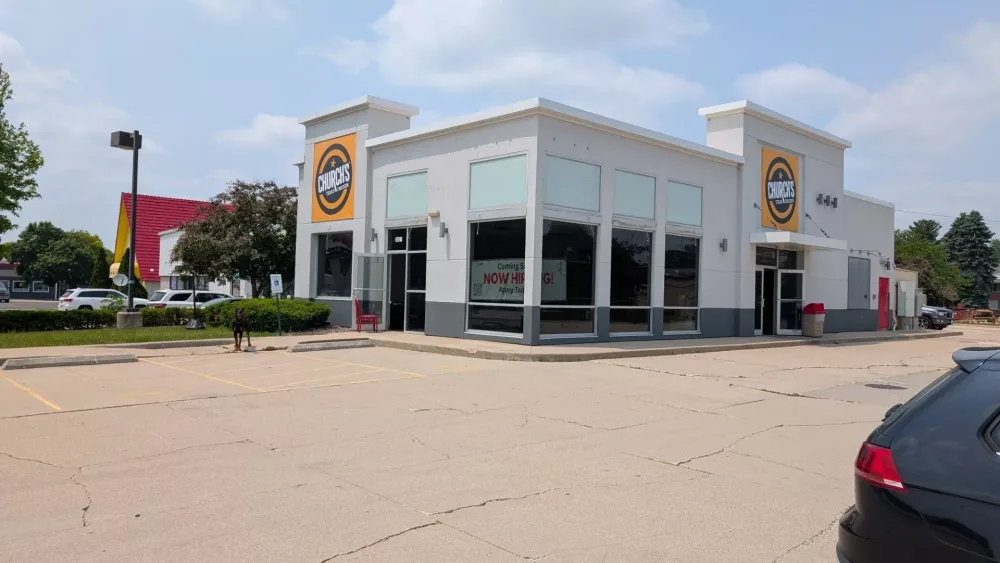By Neil Johnson
Reporter/Anchor, Big Radio and WCLO Radio News
—
It’s cold and smooth, and when you rap against it with your knuckles, you hear a dull echo through thick metal.
It’s a piece of natural gas pipeline, lashed to the trailer of a semitrailer truck, and scrawled dozens of autographs by dozens of people across the state who’ve seen the traveling exhibit. But what’s it doing in Janesville?
Mark Graul is with the nonpartisan Wisconsin Jobs and Energy Coalition, a lobbying group that’s toured Wisconsin since last year with a 34-FOOT chunk of 30-inch thick liquid natural gas pipeline. The group, and the pipe itself, stopped this week in Janesville to support a planned reroute of Canadian energy operator Enbridge’s Line 5 pipeline in northern Wisconsin.

Enbridge still faces regulatory review by the Wisconsin Department of Natural Resources over a judge’s order to relocate a 12-mile stretch of the pipeline that now runs underground through the Bad River Indian Reservation.
The pipeline is a major conduit to pipe liquid natural gas to refineries that convert it to liquid propane and then pipe it back it out throughout the Midwest. Graul said at the Janesville event Thursday that fossil fuel pipelines still are considered a less costly way to transport liquid fossil fuels compared to transport via long-haul semitrailer truck or railroad.
If the reroute around the Bad River reservation isn’t approved and construction doesn’t go ahead, Grahl’s group, which includes labor union groups, agriculture industry officials and state lawmakers among others, thinks there could cause refinery shutdowns and kinks in the propane supply chain. That could cost farmers, industry and others. Overall, the U.S. Energy Information Administration estimates that 280,000 Wisconsin households use propane for heating and other daily use.
Among the biggest Rock County industrial users of propane in industry include warehousing and distribution operations such as Beloit’s Amazon distribution center and Janesville’s Dollar General distribution center, which rely heavily on the use of natural gas-powered forklifts and other material moving machinery.
But it’s the hundreds of local farmers are perhaps the heaviest users of propane. Graul says it’s farmers who remain among the most vulnerable to price swings in natural gas, because they use propane to irrigate fields and heat barns, farm workshops and livestock confinement areas, and to fuel equipment and machinery, and dry crops at harvest.
Nationwide, propane costs peaked at $1.60 a gallon in early 2022 before settling in during the cold month months of 2023 at an average cost of 95 cents a gallon, the U.S. Energy Information Administration reports. The agency also reported that the U.S. energy sector has seen a 1,000% increase in export of propane. As of 2023, the U.S. exports about 1.7 million barrels of propane a day–a new record.
The major global uses for exported U.S. propane include heating and production of plastics and rubber.












